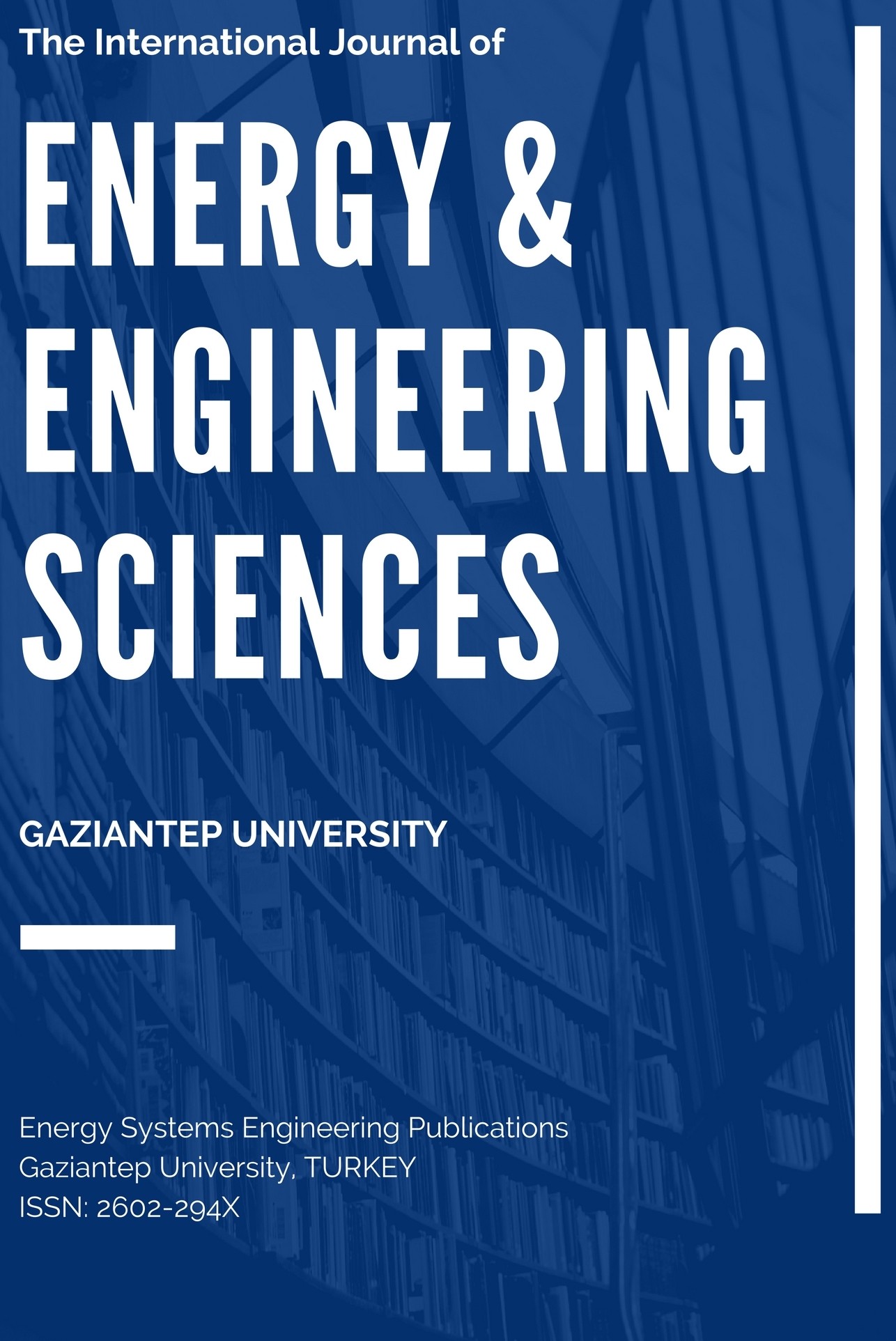A NOVEL APPROACH TO LIFE SPAN PREDICTION OF CONTAINER HOUSES VIA ADAPTIVE NEURO-FUZZY INFERENCE SYSTEM
A NOVEL APPROACH TO LIFE SPAN PREDICTION OF CONTAINER HOUSES VIA ADAPTIVE NEURO-FUZZY INFERENCE SYSTEM
___
- Adalberth K (1997) Energy use during the life cycle of buildings: a method. Building and Environment 32 (4): 317–320.
- AFAD (2012) Republic of Turkey Prime Ministry Disaster and Emergency Management Presidency 2013-2017 Strategic Plan AFAD Publication from https://www.afad.gov.tr/upload/Node/2584/files/Afad_Strtjk_web_en_son.pd f.
- Atmaca A and Atmaca N (2015) Life cycle energy (LCEA) and carbon dioxide emissions (LCCO2A) assessment of two residential buildings in Gaziantep, Turkey. Energy and Buildings 102: 417-431.
- Atmaca N (2016) Life cycle assessment of post-disaster temporary housings in Turkey. Building Research& Information, http://dx.doi.org/10.1080/09613218.2015.1127116.
- Bai,Y., Zhuang, H., andWang, D. (2006) Advanced fuzzy logic technologies in industrial applications. Springer.
- Bastos J, Batterman SA and Freire F (2014) Life-cycle energy and greenhouse gas analysis of three building types in a residential area in Lisbon. Energy and Buildings 69: 344–353.
- Buyle M, Braet J and Audenaert A (2013) Life cycle assessment in the construction sector: a review. Renewable& Sustainable Energy Reviews 26: 379–88.
- Donald A.W. (1986) A Guide to Expert Systems, (Addison-Wesley: Reading, MA). Fay R, Treloar G and Iyer-Raniga U (2000) Life-cycle energy analysis of buildings: a case study. Building Research and Information 28 (1): 31–41.
- Liebowitz, J. (1990) The Dynamics of Decision Support System and Expert System, (The Dryden Press: Orlando).
- Hammond G and Jones C(2008) Inventory of Carbon and Energy, Version 1.6 Sustainable Energy Research Team (SERT), Department of Mechanical Engineering, University of Bath, UK.
- Hammond G and Jones C(2011). Inventory of Carbon and Energy, Version 2.0 Sustainable Energy Research Team (SERT), Department of Mechanical Engineering, University of Bath, UK.
- Jang, J.S.R., Sun, C.T. and Mizutani, E. (1997) Neuro-Fuzzy and Soft Computing: a Computational Approach to Learning and Machine Intelligence, (Prentice-Hall International: London).
- Rutkowski, L. (2004). Flexible neuro-fuzzy systems: structures, learning and performance evaluation. Kluwer Academic Publishers.
- Singh, A., Berghorn,G., Joshi, S.& Syal, M. (2011). Review of life-cycle assessment applications in building construction. Journal of Architectural Engineering, 1, 15– 23.
- Takagi, T. and Sugeno M. (1985) Fuzzy identification of systems and its applications to modeling and control. IEEE Trans. Syst. Man. Cybern., 15, 116–132
- ISSN: 2602-294X
- Yayın Aralığı: Yılda 2 Sayı
- Başlangıç: 2016
- Yayıncı: Gaziantep Üniversitesi
A BOW-TIE ANTENNA DESIGN FOR BREAST CANCER DETECTION
Emine AVŞAR AYDIN, Duygu Nazan GENÇOĞLAN
SOIL EROSION RISK IN BARAK PLAIN FROM THE PERSPECTIVE OF THE ENVIRONMENTALISTS
Erdihan TUNÇ, Şahabettin DOĞAN
MICROCONTROLLER-BASED COOLING OF A SINGLE-PHASE TRANSFORMER WITH THERMOELECTRIC MODULE
Adem DALCALI, Hüseyin DEMIREL, Emre CELIK
THE EFFECTS OF LIFE SPAN ON ENERGY CONSUMPTION AND CO2 EMISSIONS OF CONTAINER HOUSES
Sultan ÖZTÜRK, Kürşat İCİN, Bülent ÖZTÜRK, Uğur TOPAL, Hülya KAFTELEN
